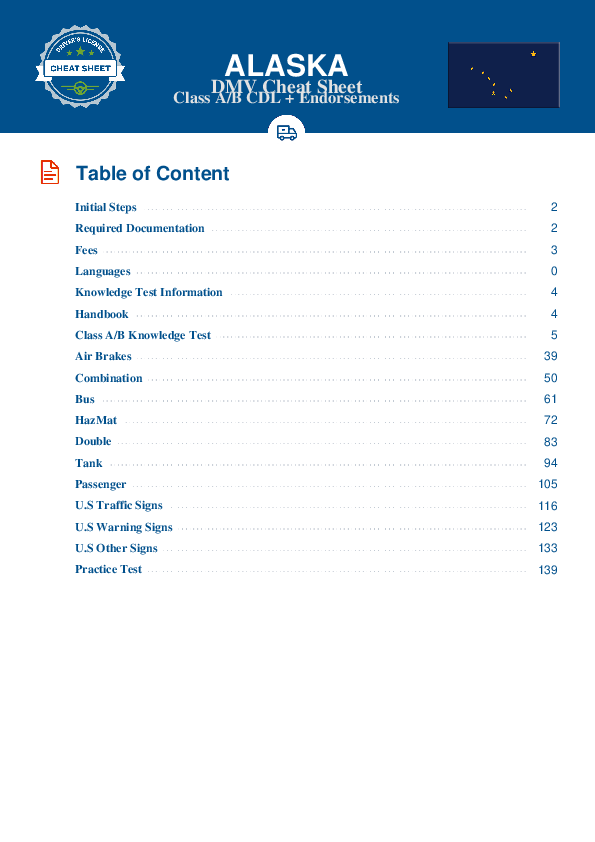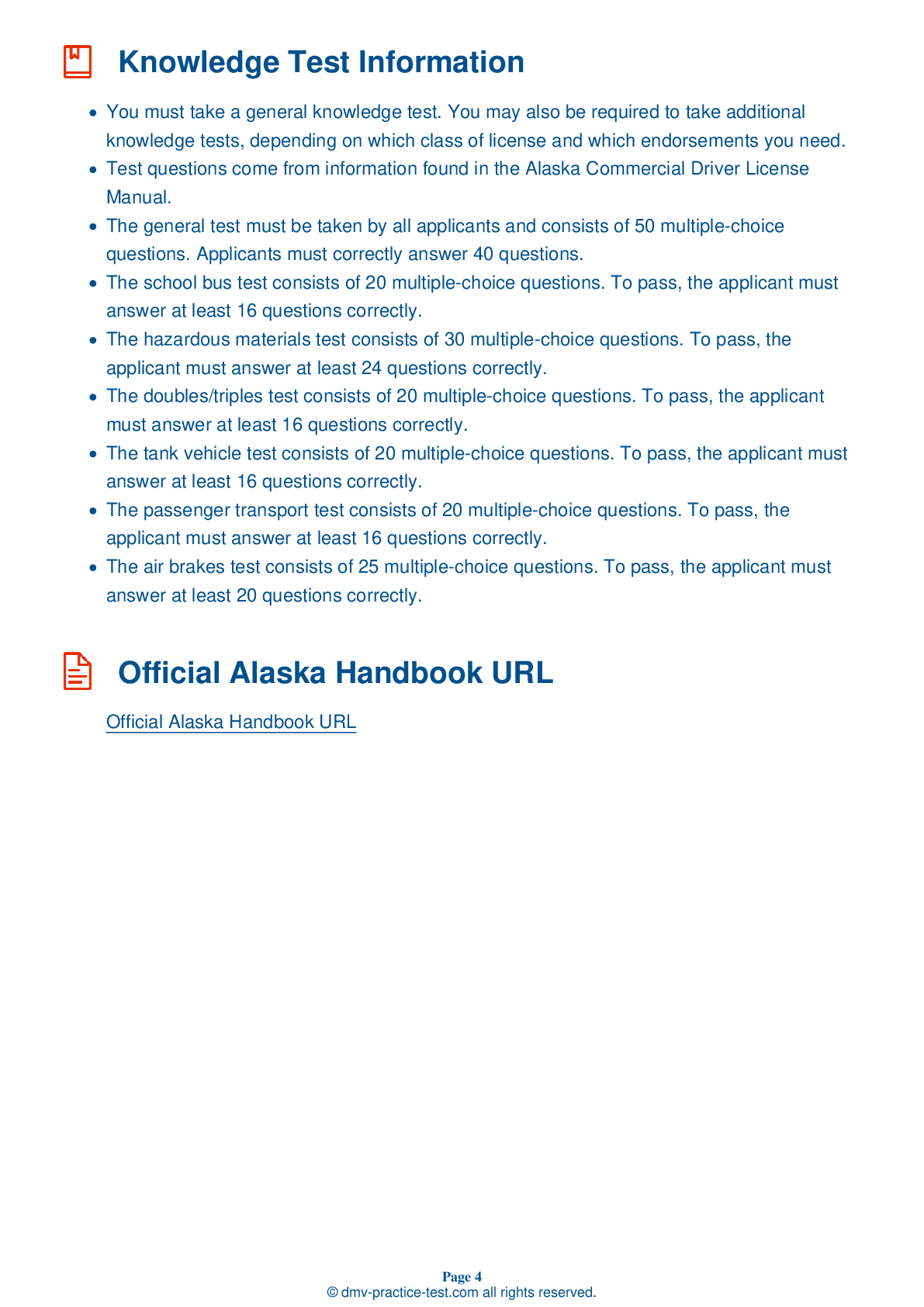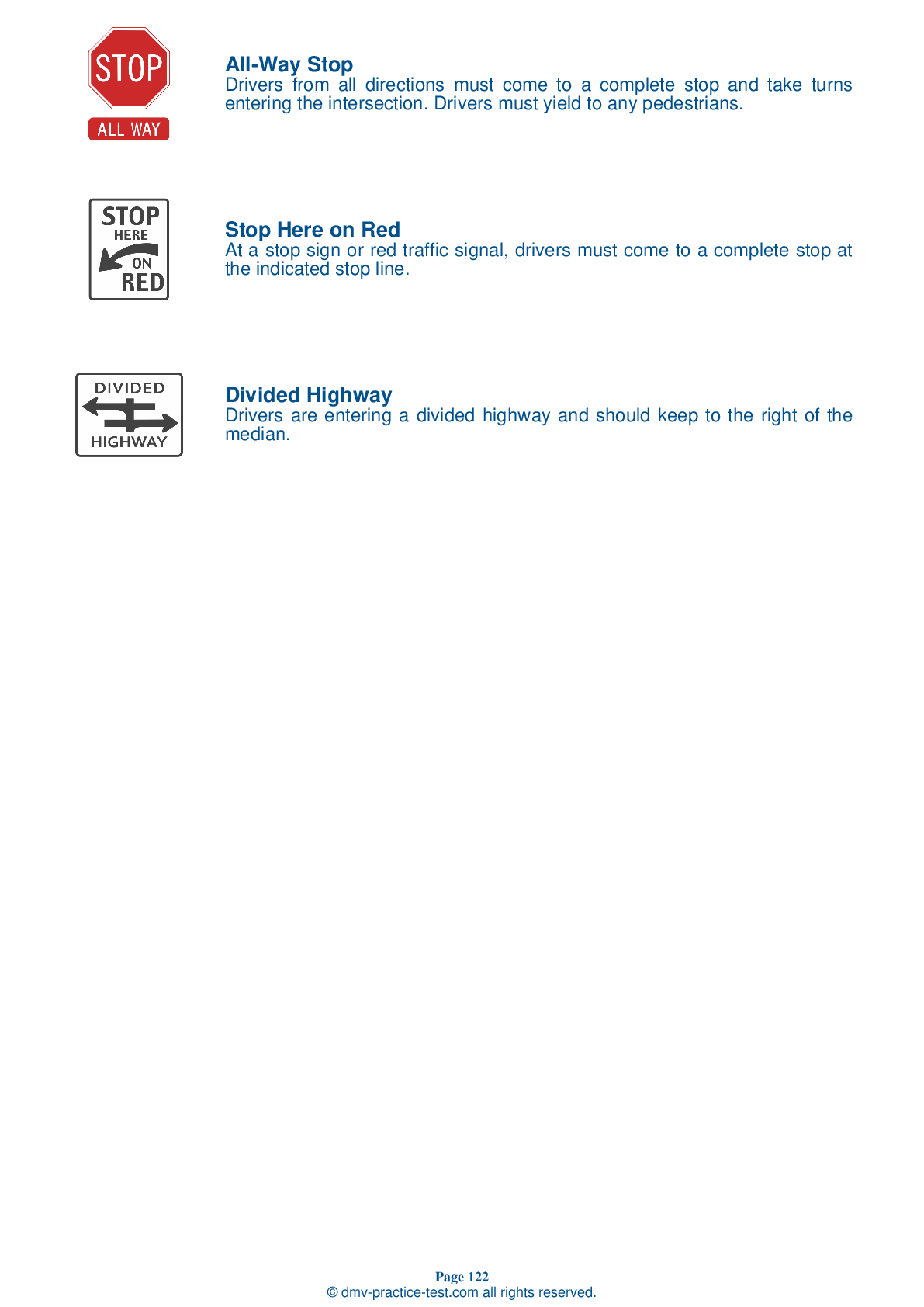Class A Driving Test | Alaska 2025 #2 Page 3 of 7
Train for FREE online with our Alaska class A license test. The official exam test consists of several obligatory parts, with all of them checking your knowledge of different blocks of road rules. If you need to obtain a AK CDL class A permit in 2025, practice as much as possible. Free sample tests published on our website will help you check and improve your knowledge and boost your grades. Please bear in mind that CDL class A requirements may vary from state to state.
15 . Placards should be used:
Warning placards are required to be used any time a vehicle is carrying designated types and amounts of hazardous materials. A placarded vehicle must display placards on all four of its sides.
16 . If the brakes pull to one side or the other when used:
If the brakes pull to one side or the other when used, it is an indication of brake trouble.
17 . Before entering a curve, you should:
It is important that the driver of a CMV always downshifts before entering a curve.
18 . Hydroplaning:
Hydroplaning is an effect in which a vehicle's tires lose traction with the surface of the road and instead glide along a layer of water. There does not have to be a large amount of water on the road for this to occur. Hydroplaning can begin at speeds as low as 30 mph.
19 . The leakage rate for a single vehicle with air brakes should be no more than ____ in one minute during a static leakage test.
When performing a static leakage test on a single vehicle with air brakes, the leakage rate should be no more than 2 psi in a minute. If the air leaks from the air brake system at a quicker rate, the vehicle should not be driven because something likely needs to be repaired.
20 . If traveling at 55 mph on dry pavement, your minimum braking distance will be close to:
Your vehicle's stopping distance can be calculated by adding together your perception distance, your reaction distance, and your vehicle's braking distance. When traveling on dry pavement with brakes that are in good condition, your braking distance will be about 216 feet.
21 . While driving, ____ generally holds spring brakes in place.
While driving, spring brakes are generally held in place by air pressure. If the air pressure gets low enough, the springs will activate the brakes.
See the exact questions that will be on the 2025 Alaska DMV exam.
99.2% of people who use the cheat sheet pass the FIRST TIME
Lillian MCcranie explains how our CDL study guide was helpful in passing the exam and recommends it to everyone.
Cameron tells us how he purchased the CDL exam, and found it to be a useful tool which helped him pass the exam and find a job.



